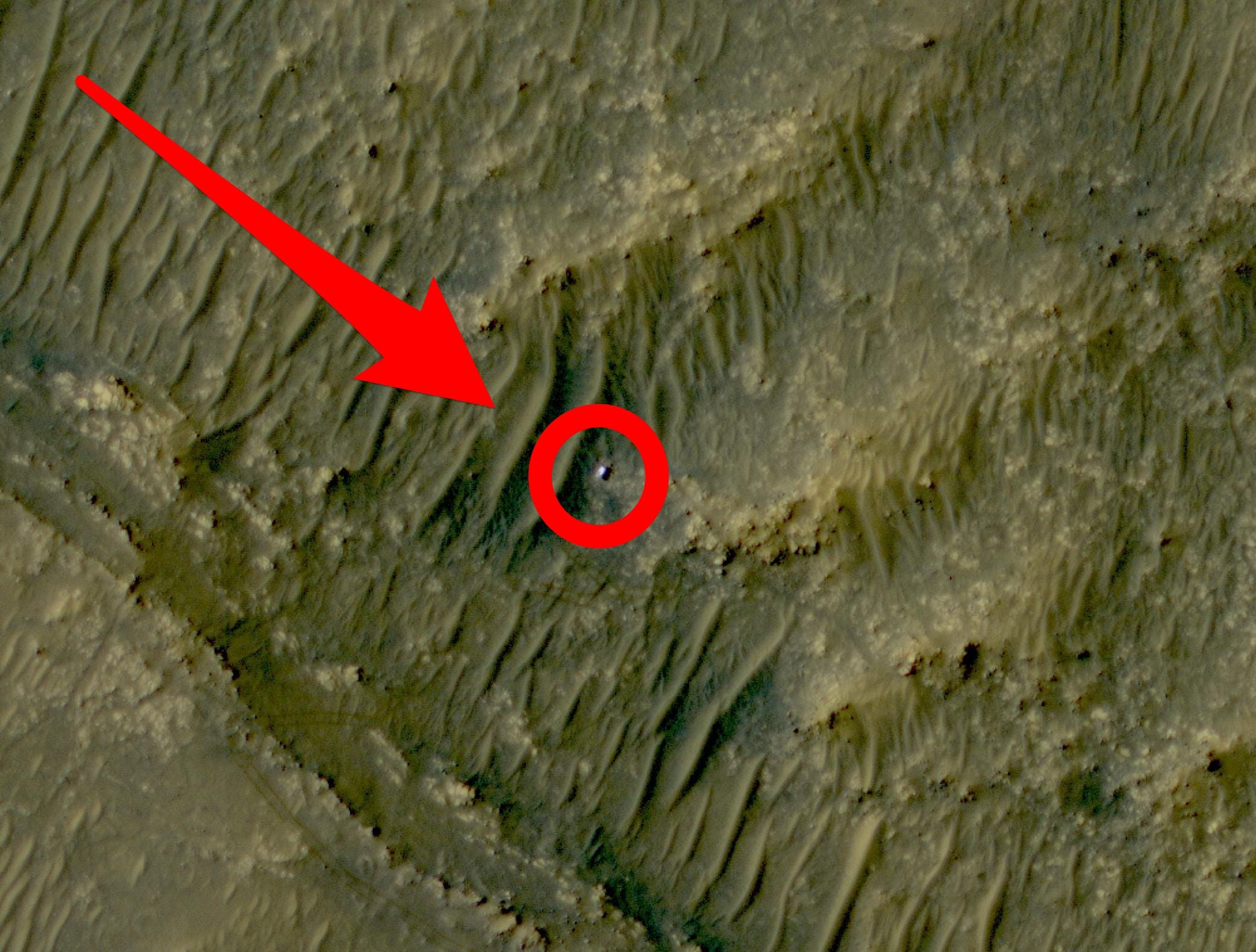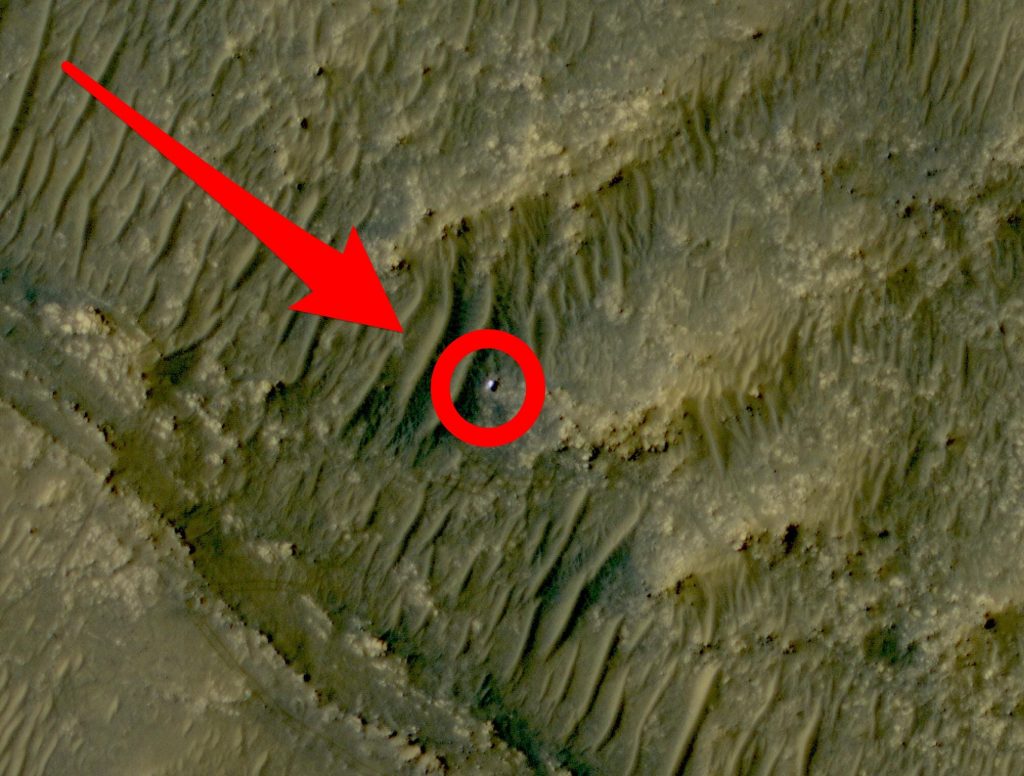
NASA/JPL-Caltech/University of Arizona
- NASA's Mars Reconnaissance Orbiter caught a view of Perseverance rolling across the Jezero Crater.
- The rover was traveling along some of the oldest accessible pieces of rock in the crater.
- Communication with it may be hard next week as Earth and Mars move to opposite sides of the sun.
In a recent satellite photograph, NASA's Perseverance rover can be spotted rolling along Mars' Jezero Crater in search of the next ancient boulder.
The rover, which made landfall after its precise plunge in February, trekked through the dirt to conduct its next series of drillings in its mission to explore the red planet for signs of ancient microbial life.
Perseverance – nicknamed "Percy" – is exploring a region known as South Séítah, which comes from a Navajo phrase meaning "amidst the sand." The Séítah area contains some of the deepest and perhaps oldest accessible geologic units in the Jezero Crater, according to NASA.
But Percy is familiar with the terrain. In September – after a failed first attempt – the rover completed its first successful drilling operation near South Séítah at a large boulder nicknamed Rochette. NASA hopes to one day return the core rock samples to Earth.
While Percy and its trailing helicopter, Ingenuity, appear to be alone on Mars, the rover has company from above. With the help of its High-Resolution Imaging Science Experiment camera, the Mars Reconnaissance Orbiter – which recently celebrated its 15th year in orbit – surveys the planet in search of signs of water. On the side, the orbiter will snap photos of its rover coworkers in motion.
Earlier this year, the spacecraft captured the Curiosity rover trekking up Mont Mercou, which is part of a hilly region at the base of Mount Sharp - an area observed only from a distance since the rover landed nearby in 2012.
While NASA's spacecraft are business as usual around the red planet, the rovers and NASA's remaining fleet are harder to reach. As Earth and Mars move to the opposite sides of the sun - an alignment that occurs every two years - communication can become more difficult, according to NASA.
Between October 2 and 14, NASA's Jet Propulsion Laboratory mission controllers plan to turn off some instruments, while others will continue sending data to Earth - even though the incoming information could be lost. In the meantime, after sending two weeks' worth of instructions, some engineers have no choice but to wait until the conjunction ends.
"Like parents who raise youngsters to be responsible and let them go on a short vacation with their friends, they've done all they can to ensure the voyagers will be healthy and safe," NASA wrote.
